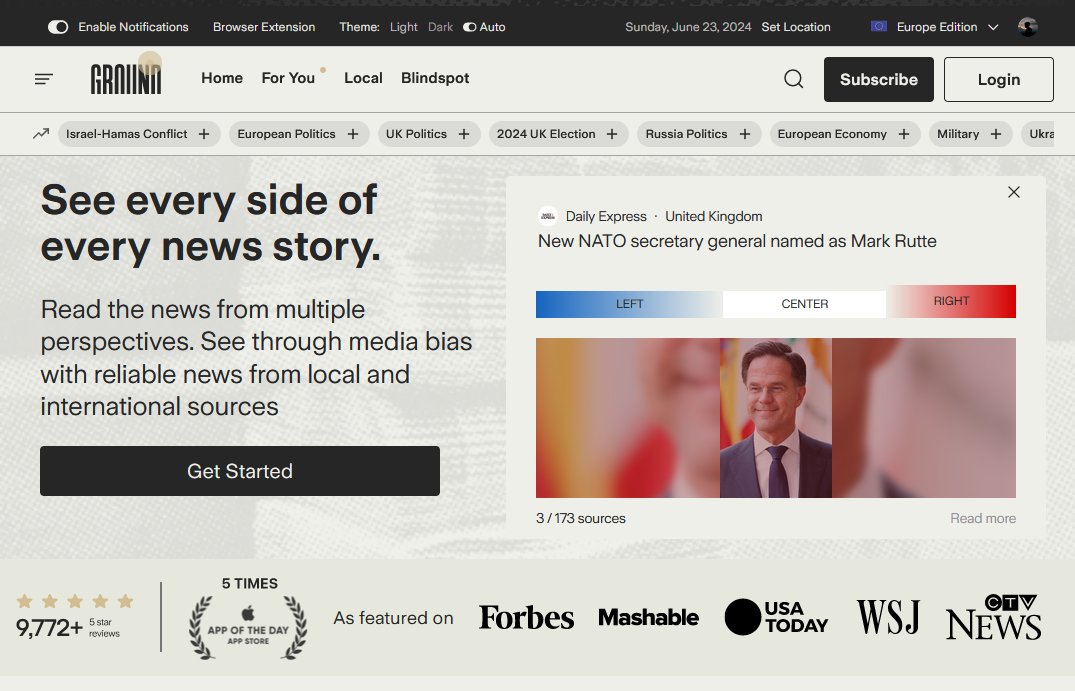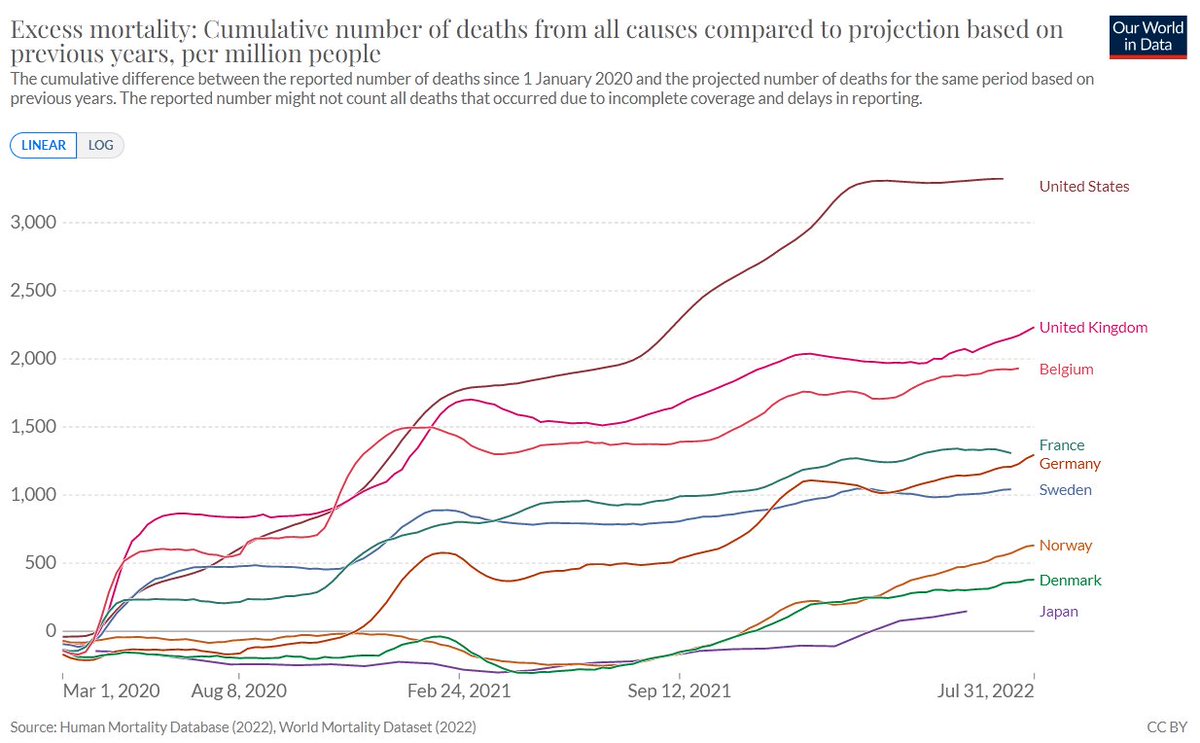Note to journalists: "We are finding more infected because we are testing more" is a misleading thing to report.
When you write anything about testing, it's the 'rate' of infected that matters. If they test more, the rate of infected should go down. ⬇
When you write anything about testing, it's the 'rate' of infected that matters. If they test more, the rate of infected should go down. ⬇
From a journalistic perspective, we need to think a lot more about outcomes. Think about how the public will react when they read what you write.
If you write: "They test more so we see more infected", people will think: "Oh yeah, that makes sense. So everything is fine."
If you write: "They test more so we see more infected", people will think: "Oh yeah, that makes sense. So everything is fine."
But if the rate of infected isn't going down as they increase the test level, then things are not fine. Instead, the public needs to do more to stop the virus ... but they are not doing this because you just reported that these numbers are not something we should worry about.
We then see this being used as an argument for easing restriction and people going back to whatever they did before (which is exactly what is causing these waves of infected to emerge).
Take the example of Denmark: Over the past three months, we see that the number of tests has increased (as they say they have).
But when we look at the 'rate', we see that this too has gone up (although it has fluctuated).
We were at 0.3% , now we are at 0.6%.

But when we look at the 'rate', we see that this too has gone up (although it has fluctuated).
We were at 0.3% , now we are at 0.6%.
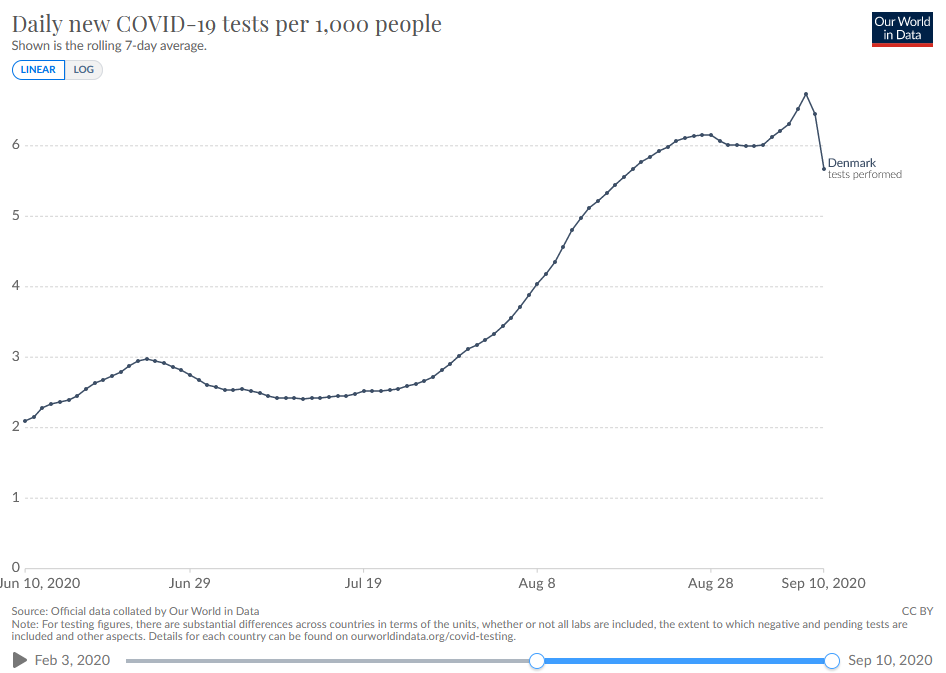
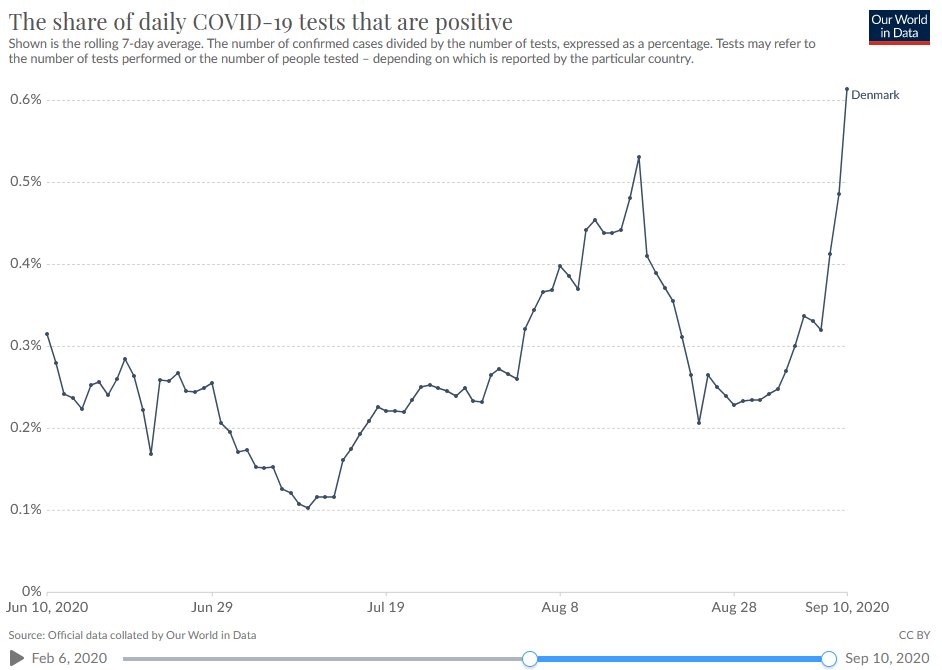
So things are definitely not fine, and the increase in infected cannot just be explained by "We are testing more".
As the press, we need to motivate the public to do even more to get this thing stopped. But we are doing the opposite by telling people that there is no problem.
As the press, we need to motivate the public to do even more to get this thing stopped. But we are doing the opposite by telling people that there is no problem.
Let me give you some more examples:
In the UK, we see that they have massively increased the number of test, and initially this caused the 'rate' to go down (very good) ... but then they got hit by a second wave and the rate has now shot back up.
So this is bad.

In the UK, we see that they have massively increased the number of test, and initially this caused the 'rate' to go down (very good) ... but then they got hit by a second wave and the rate has now shot back up.
So this is bad.
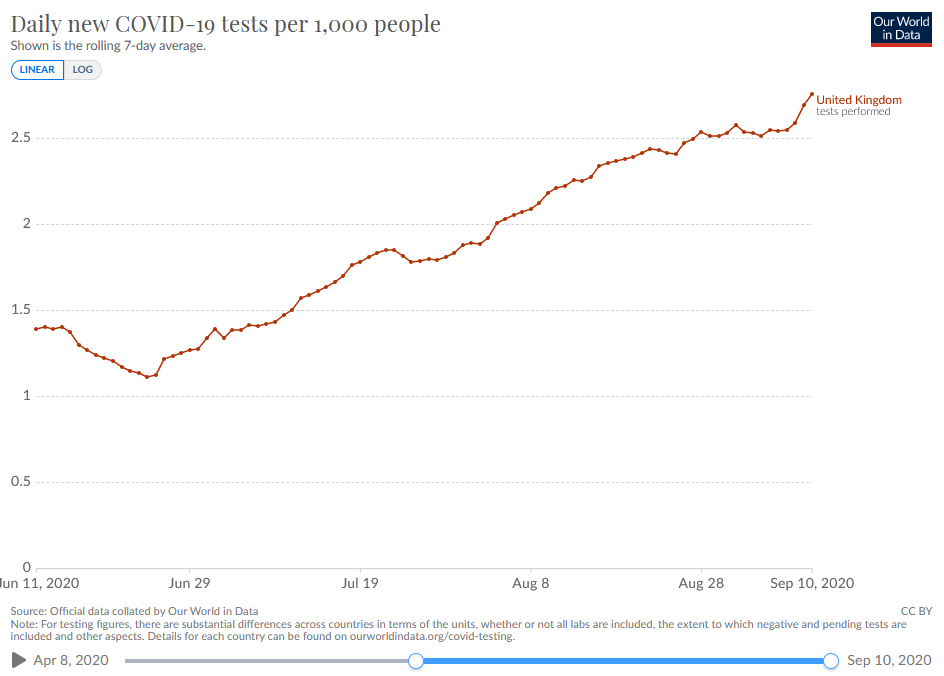
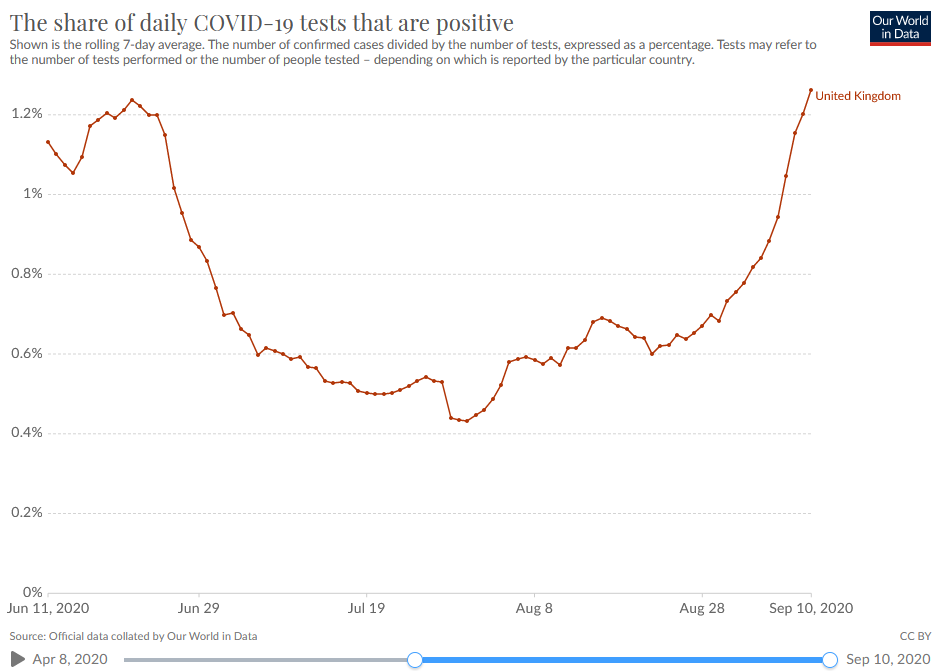
In Germany, they have also increased testing, but here the rate has stayed the same. This is also bad. Remember, if you test more people, the rate should go down. Staying flat is better than it going up, but it still indicates a problem. 

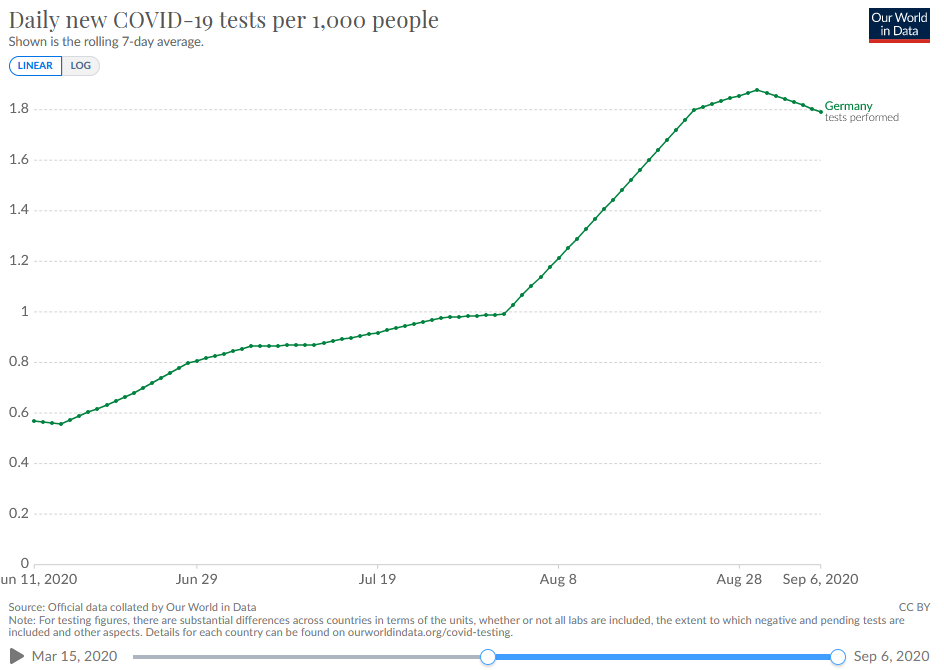
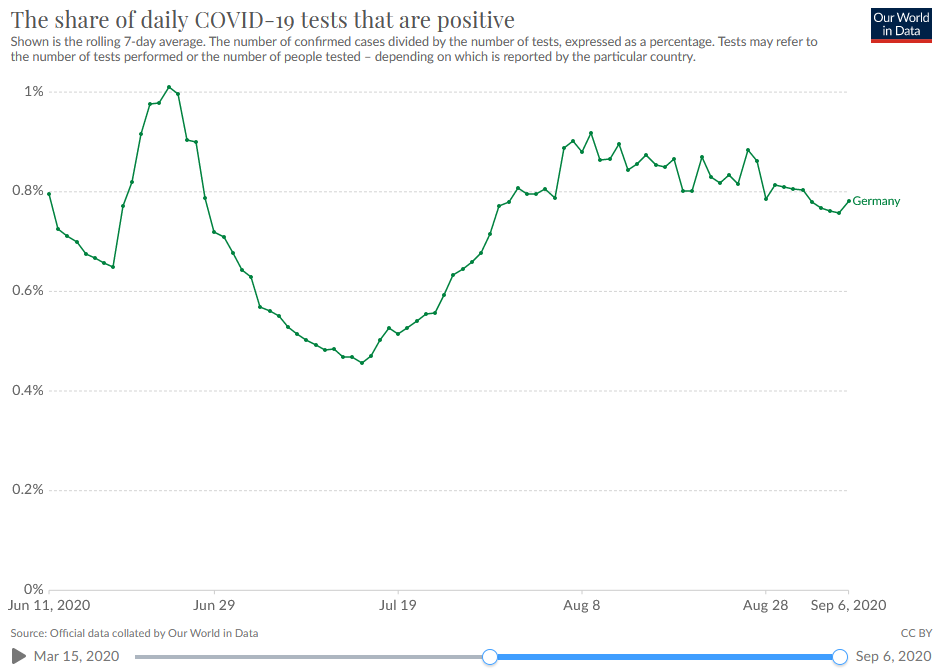
In Sweden, they have also increased testing, but here the rate has gone down.
So Sweden are actually starting to get things under control. This is what we like to see. (although it's still high since Sweden came from much higher numbers to begin with)

So Sweden are actually starting to get things under control. This is what we like to see. (although it's still high since Sweden came from much higher numbers to begin with)
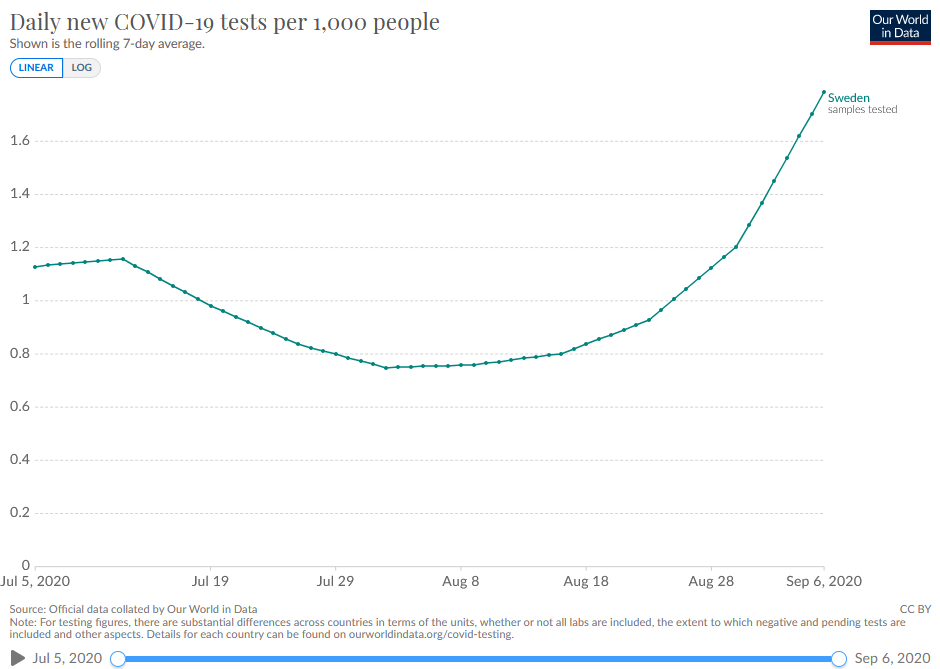
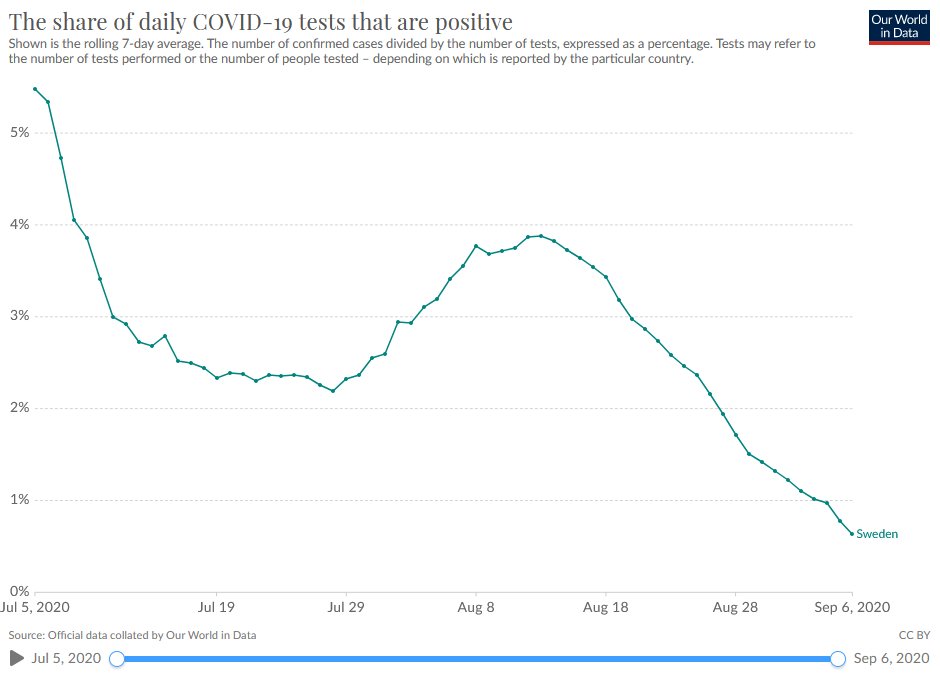
In France, the level of testing has also gone up, but the rate has shot up even more.
This is really, really, really bad ... and if any politician in France says: "We are testing more so we are also finding more people", that's a lie.

This is really, really, really bad ... and if any politician in France says: "We are testing more so we are also finding more people", that's a lie.
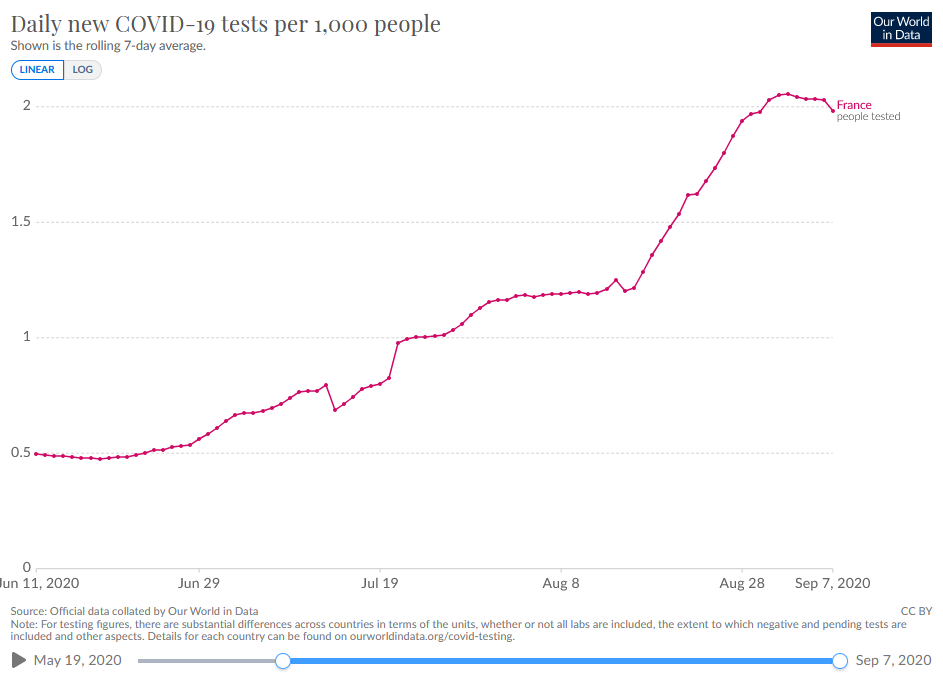
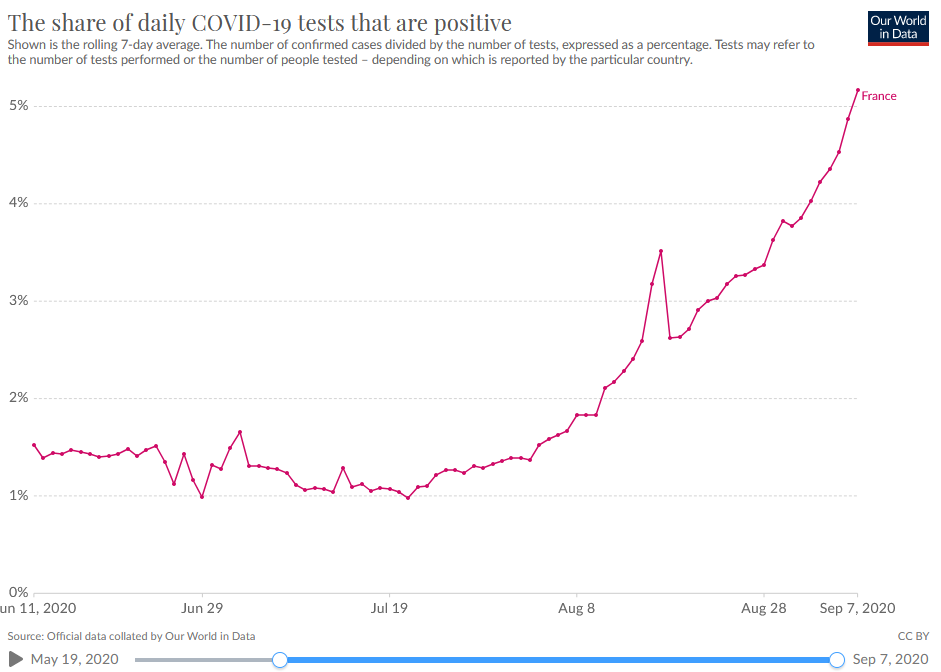
In Spain, it's the same story as in France. More testing, but the rate keeps climbing. This is really bad.
Here too "More testing = more people" is a lie. Again, remember, if you test more, the rate should go down. If it goes up, it means things are getting worse.

Here too "More testing = more people" is a lie. Again, remember, if you test more, the rate should go down. If it goes up, it means things are getting worse.
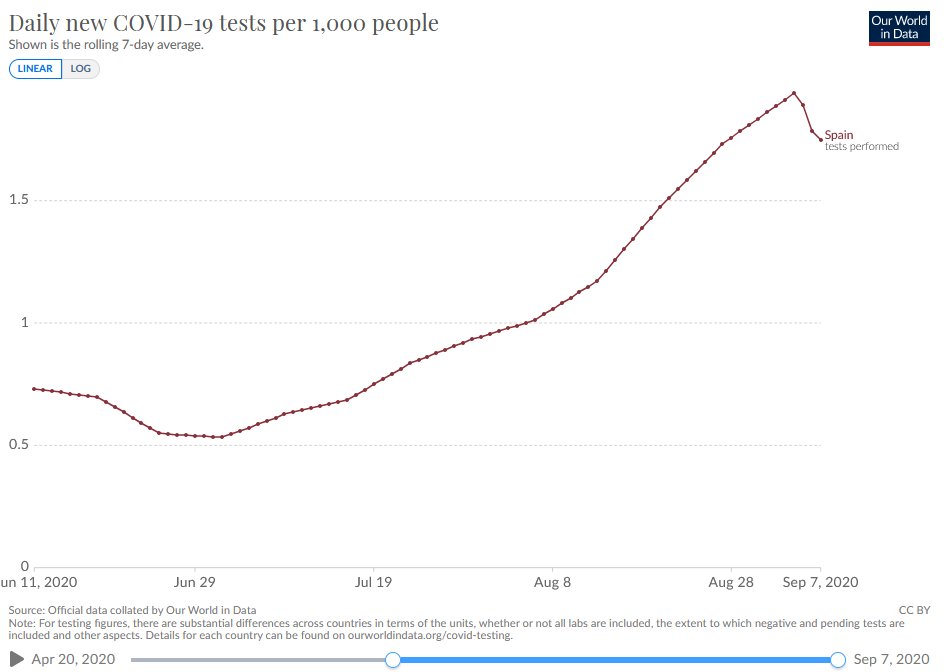
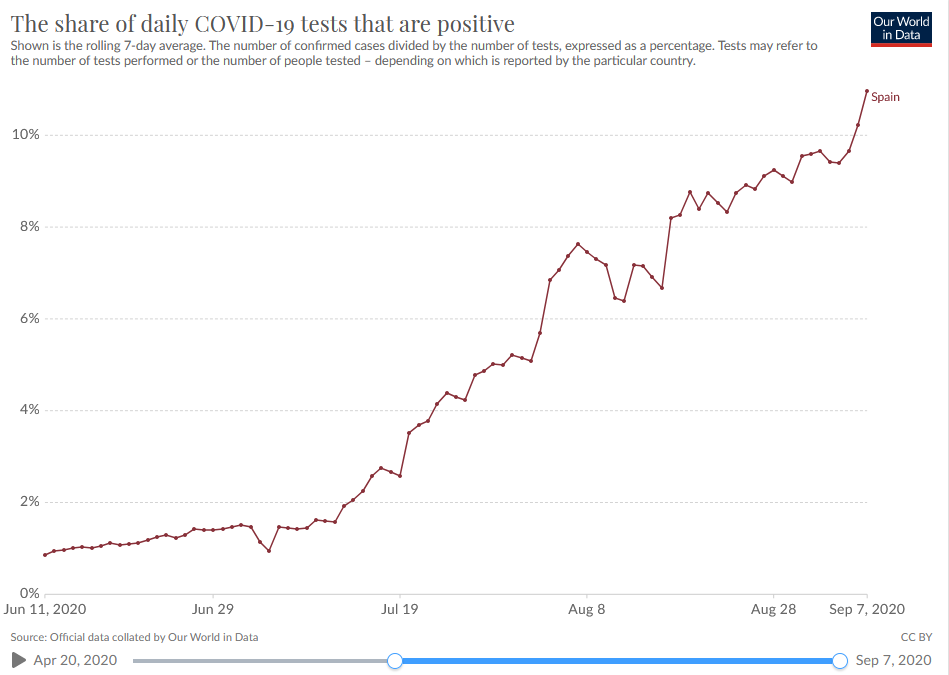
In Italy, they started testing more people about a month ago, but even with this increased testing, the 'rate' keeps climbing too. Again, really bad. 

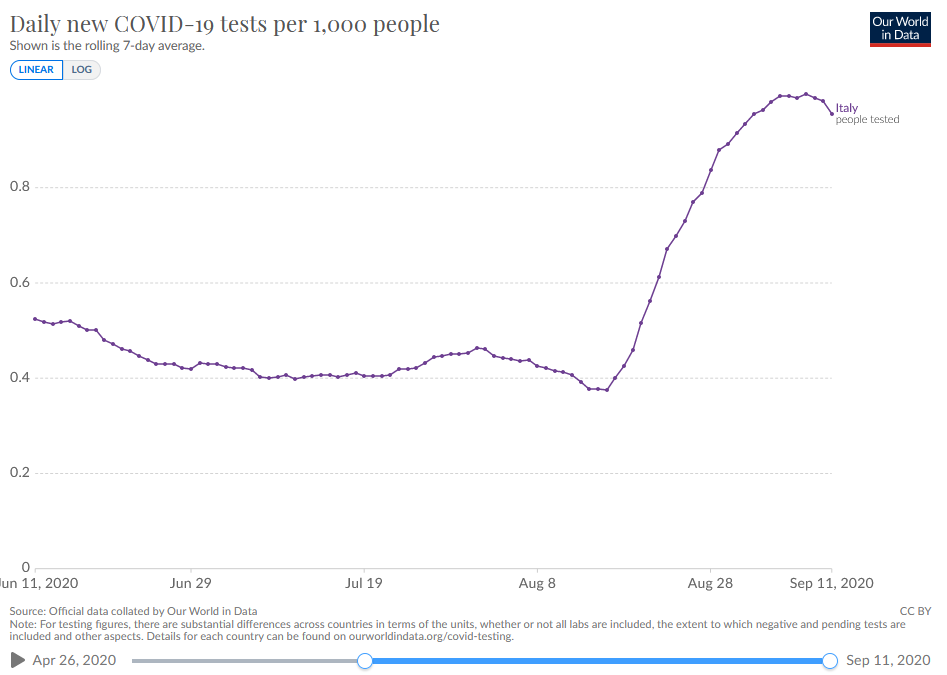
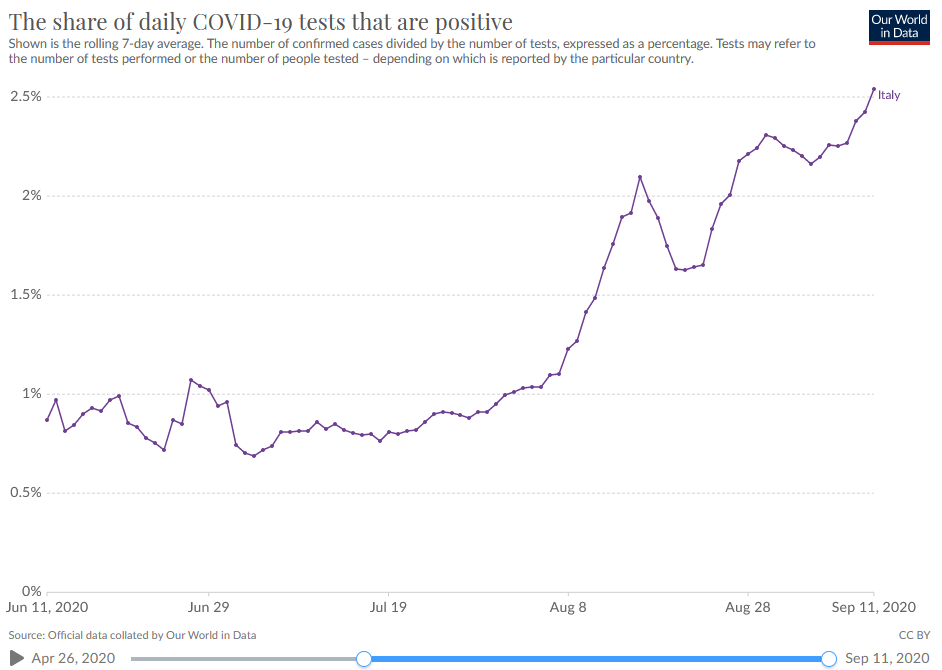
In the USA, testing levels have been flat recently, and we are starting to see the rate going down. So, like Sweden, here too things are getting better:
(But remember, the USA still have many times more infected per capita than most other countries)

(But remember, the USA still have many times more infected per capita than most other countries)
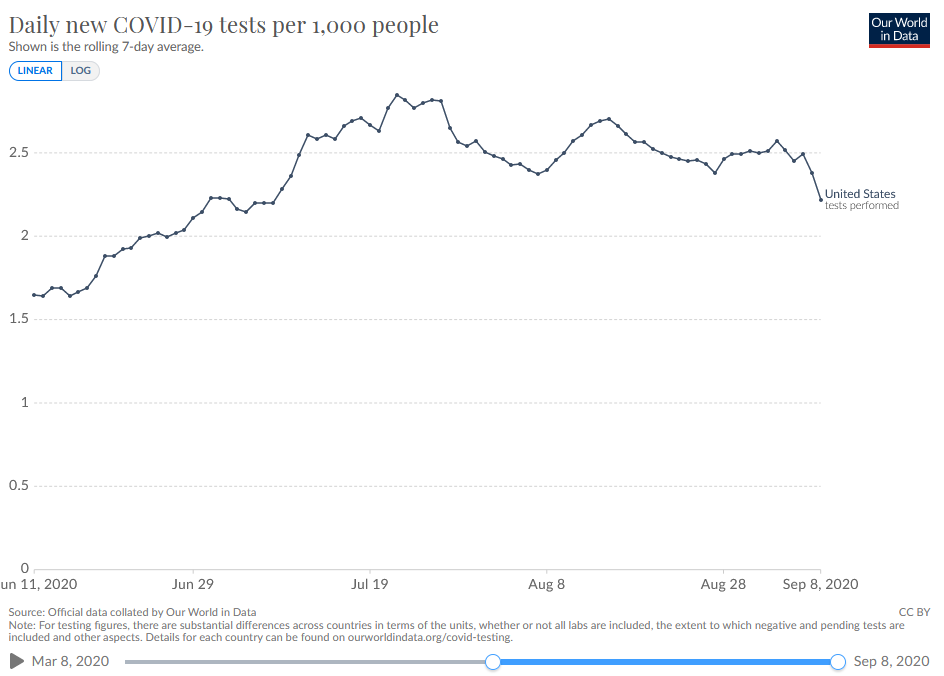
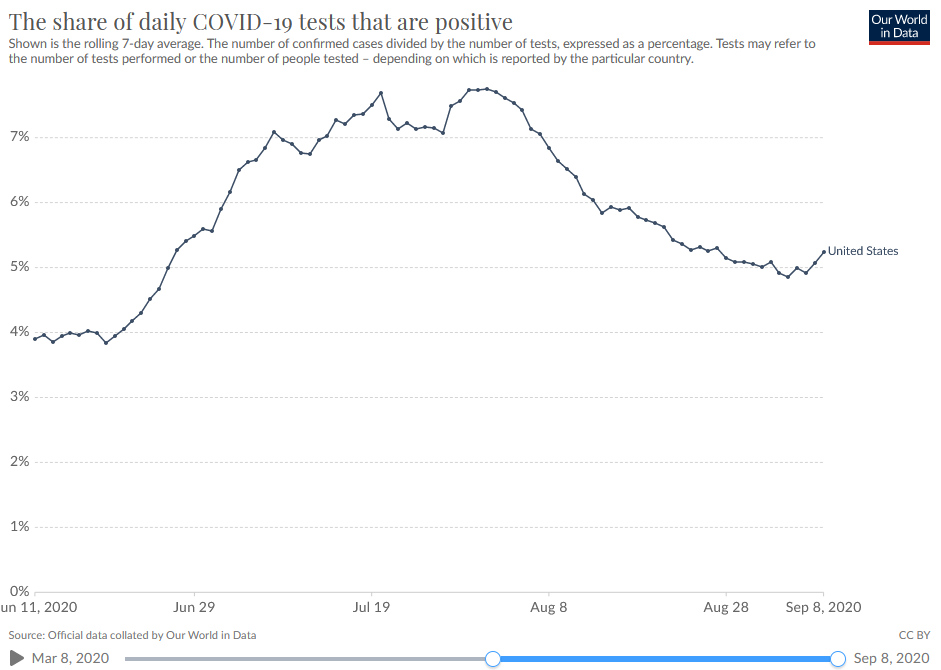
In Canada, they have also increased testing, but the rate is starting to go up again, but only slightly.
Again, remember, it should go down when you test more people.

Again, remember, it should go down when you test more people.
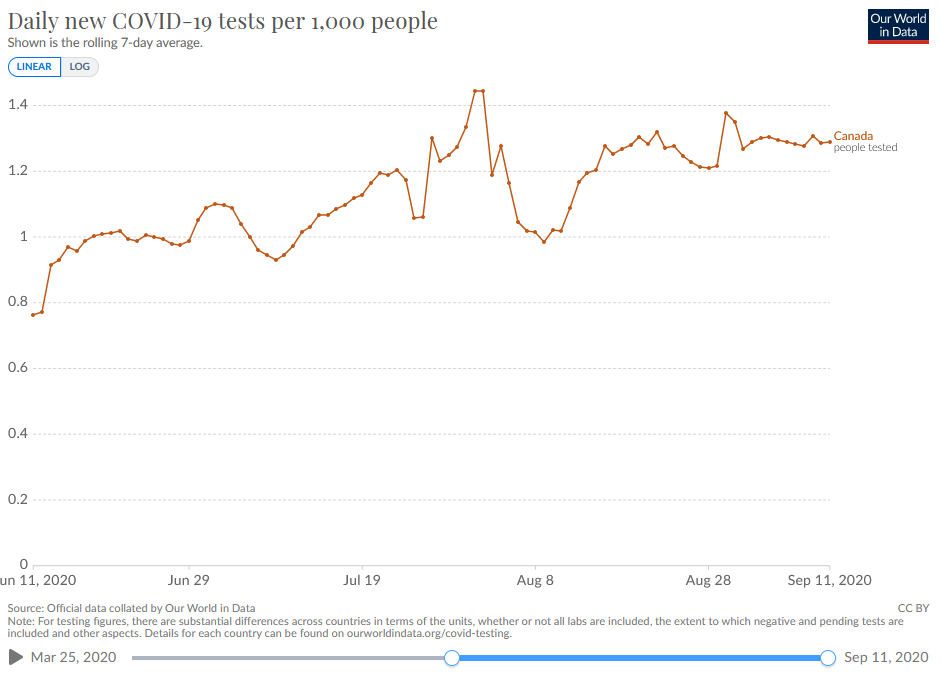
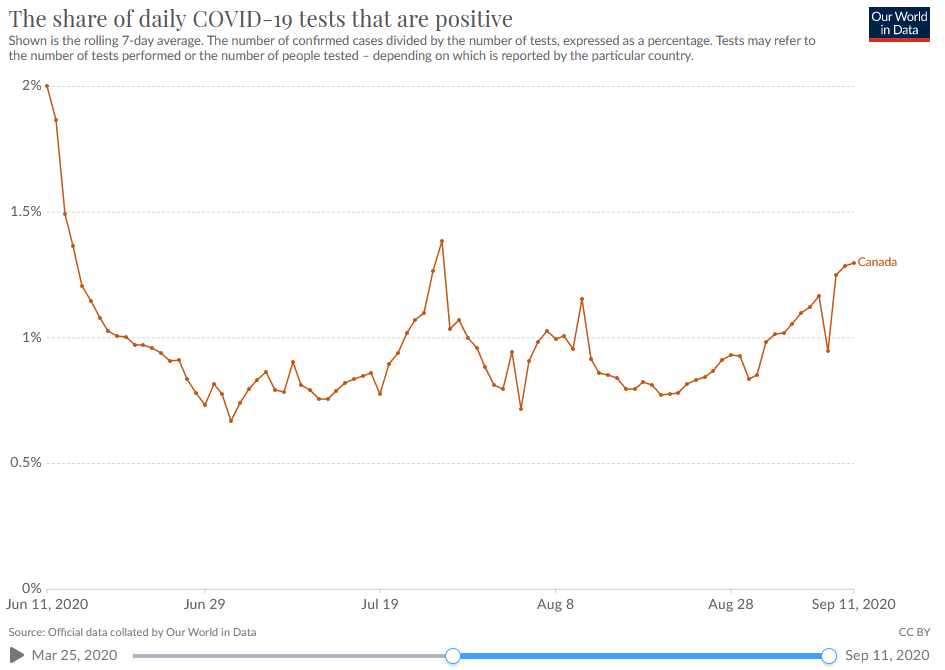
Finally, Australia. More testing, and here, after a huge problem in July, the rate is coming down. So things are improving in Australia.
Aka, they can now say: "We are testing more people and finding less infected."
Brilliant.

Aka, they can now say: "We are testing more people and finding less infected."
Brilliant.
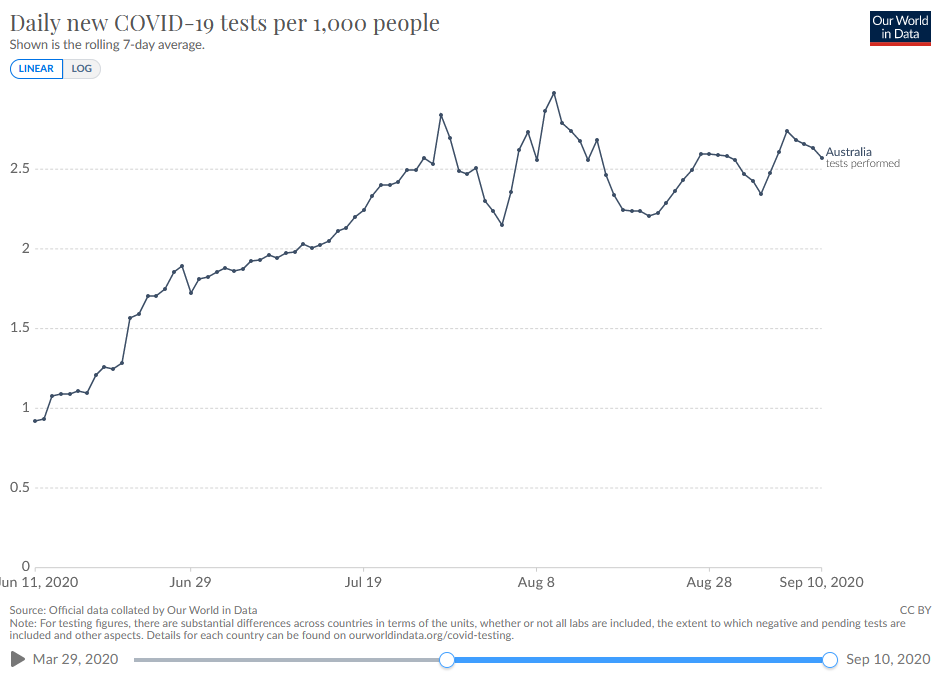
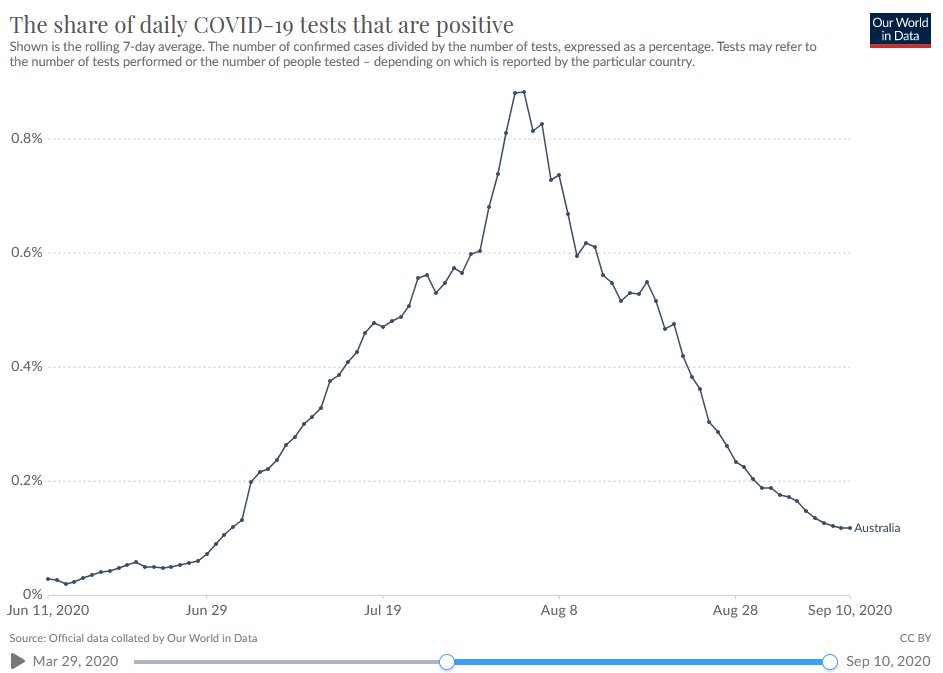
• • •
Missing some Tweet in this thread? You can try to
force a refresh


